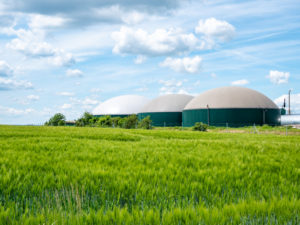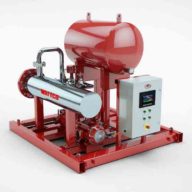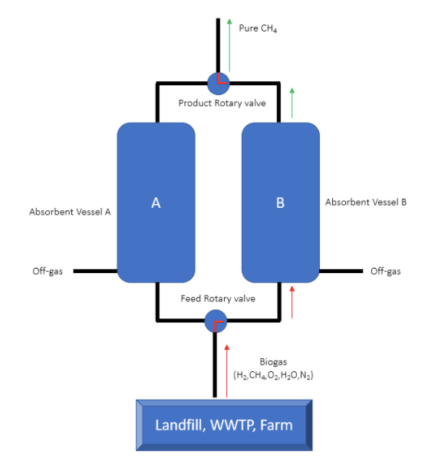Renewable Natural Gas-A Step Change Towards Clean Energy
Last updated on June 18th, 2021 at 08:06 pm
 The world has shifted focus to reducing greenhouse emissions and introducing carbon-neutral and carbon-negative technologies. To accomplish this, scientists are developing new innovative tech such as electric immersion heaters. With a smaller environmental footprint and no loss in efficiency, electric heaters are driving these goals forward in all major industries. In large part, this is due to their compatibility and effectiveness with renewable energy options.
The world has shifted focus to reducing greenhouse emissions and introducing carbon-neutral and carbon-negative technologies. To accomplish this, scientists are developing new innovative tech such as electric immersion heaters. With a smaller environmental footprint and no loss in efficiency, electric heaters are driving these goals forward in all major industries. In large part, this is due to their compatibility and effectiveness with renewable energy options.
The agriculture industry is an especially important focus for cleaner energy. According to the United States Environmental Protection Agency (EPA), agriculture accounts for 11% of greenhouse emissions. Key agricultural emissions include livestock, manure management, landfill, wastewater treatment, and the burning of agricultural waste. These play a major role in the emissions of greenhouse gases. Greenhouses gases primarily consist of methane with:
- oxygen
- hydrogen
- nitrogen
- carbon dioxide
- carbon monoxide
Agriculture is not the only industry responsible for methane emissions. For instance, it is also extracted as part of the oil and gas exploration process and provides a valuable source of energy for domestic and commercial consumers. Energy use affects the emissions of most commercial and residential activities and processes. Taking the step towards a greener planet means moving towards clean energy through processes such as the purification of biogas.
Biogas, a byproduct of the agricultural emission processes, can be used to generate Renewable Natural Gas (RNG). New technologies allow this processing to remain energy efficient while still providing a smaller ecological footprint. As such, they are practical and easy to deploy within existing farms, wastewater treatment facilities, and landfill locations. This has led to the development and adoption of the Pressure Swing Absorption (PSA) process.
What is PSA?
Pressure swing Absorption (PSA) leverages the “affinity” that some gas molecules have to absorb onto certain solid absorbent material. The process occurs at high pressure. As the pressure reduces, the separation of the gas molecule from the solid surface occurs. Although this occurs at near ambient temperatures, temperature control is still necessary to provide high pressures for the absorption process.
The solid absorbent surface traps the target gas molecules on the porous surface of the absorbent, while other gas molecules travel through the absorbent bed unhindered. These gases are then available for extraction on the outlet or exhaust.
Absorbent materials, such as zeolite, have an affinity towards nitrogen at high pressure. Under low pressure, nitrogen separates from the zeolite resulting in regeneration of the absorbent. PSA technology physically binds gas molecules to the absorbent. The face of this binding depends upon various factors like partial pressure of the gas, operating temperatures, and the polarity of the gas molecule and the absorbent material. Electric immersion heaters play a crucial role in controlling these factors.
Temperature Swing Absorption (TSA) for Regeneration
After a certain number of cycles, the absorbent material loses its affinity to the gas molecules. This is because the pores are either filled with affinity gases. Another cause is the absorption of moisture when operating at near ambient temperatures. Moisture is a major factor in the degeneration of the absorbent bed.
Temperature Swing Absorption (TSA) helps regenerate the absorbent. The process increases the temperature from near ambient to 200 ˚C, evaporating the moisture. This coupled with low pressure PSA process will release the moisture and absorbed gases thus regenerating the absorbent bed.
Role of PSA in Biogas purification
PSA plays a pivotal role in the purification of biogas because of its high impurity content—which renders it useless for any energy generation activity. At high pressure, the biogas is introduced into the vessel filled with the bed of absorbent. The gas stream is purified when certain molecules (N2, O2, CO, H2S, and/or CO2) are absorbed by the absorbent bed. This results\ in 97%-98% pure methane extraction.
In the stream of biogas coming to the inlet of the vessel, highly volatile components of the gas like H2 (hydrogen) and CH4 (Methane) with low polarity are practically nonabsorbable in the absorbent bed packed with layers of zeolite (for nitrogen), activated carbon (for organic compounds), activated alumina (for H2S), silica gel (for water) and molecular sieves as opposed to the molecules of gases such as N2, O2, H2S, H2O and CO2 which are absorbed by the absorbents and pure methane is extracted at the outlet.
High-Efficiency PSA process
 To improve the efficiency of the PSA, a system of rotary vales is used along with a cluster of the absorbent vessels. The system has one rotary valve, the feed rotary valve, connected at the bottom of the PSA absorbent vessels. As well as one rotary valve connected at the top of the vessels called a product rotary valve.
To improve the efficiency of the PSA, a system of rotary vales is used along with a cluster of the absorbent vessels. The system has one rotary valve, the feed rotary valve, connected at the bottom of the PSA absorbent vessels. As well as one rotary valve connected at the top of the vessels called a product rotary valve.
This network of multiple absorbent vessels connected through the piping increases the efficiency of the PSA process. When one vessel reaches its absorbent capacity the feed rotary valve switches the pressurized feed gas to the next column or absorbent vessel while the product rotary valve switches to that vessel. Thus the pressure on the first absorbent vessel is reduced to release the absorbed gases, regenerating the absorbent and making that vessel ready for the next cycle of absorption. The network of absorbent vessels and with two valves rotating together and gas flow switching from one vessel to the next one ensures near-continuous operation of the system. This further enhances the operating time and overall efficiency of the PSA process.
Conclusion
PSA is fast becoming the method of choice for onsite mobile deployment of systems for the production of Renewable Natural Gas (RNG). It is especially valuable for use in landfills, farms with manure management, and wastewater treatment plants. The efficiency of the system depends on the concentration and type of absorbed used, partial pressures of the biogas stream, operating temperatures, and level of contaminants (H2O, Volatile organic compounds VOCs, hydrogen sulfide).
Although PSA systems and associated components are designed with specific levels of contaminants in the biogas feed stream, higher concentrations of contaminants including liquids of any kind which can adhere to the absorbent bed may reduce the working capacity. The RNG from this process can be injected into the national gas grid to replace fossil fuel gases. Or it can be used as a primary fuel input to the hydrogen generating reforming process or other fuel. As such, it is a very efficient and integrated process that shrinks our environmental footprint.

